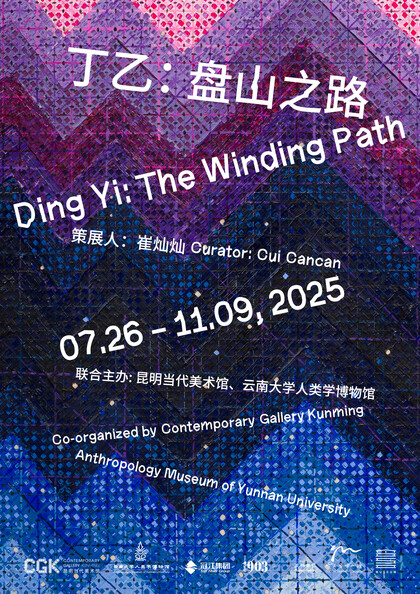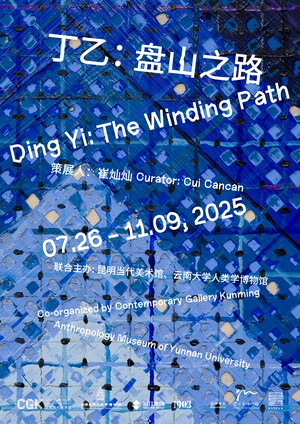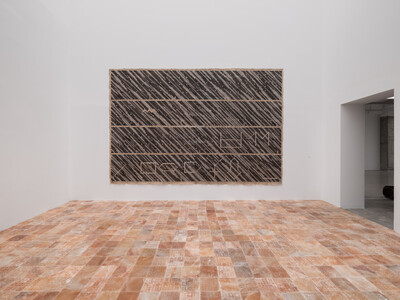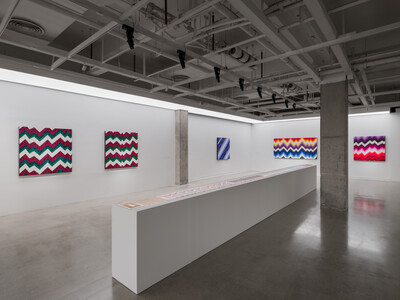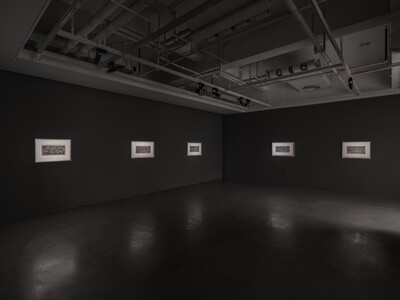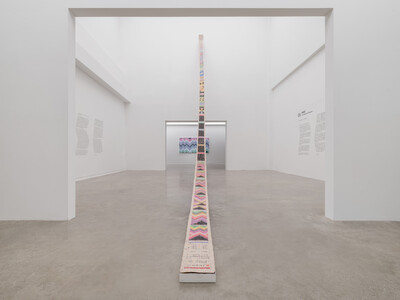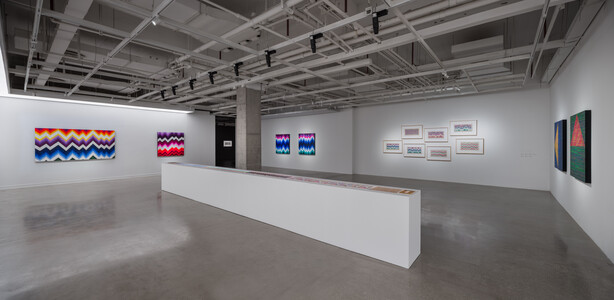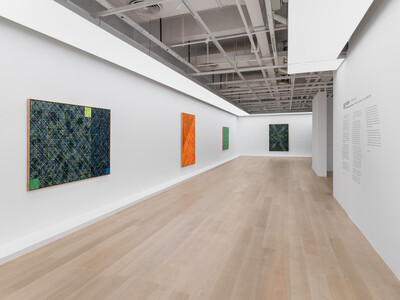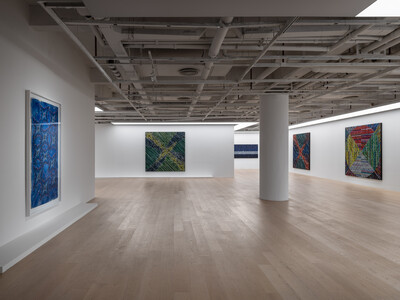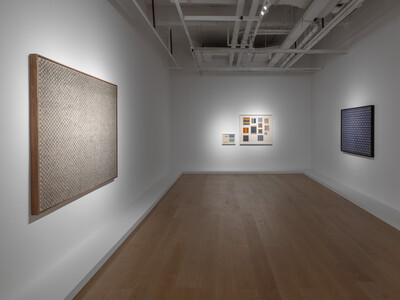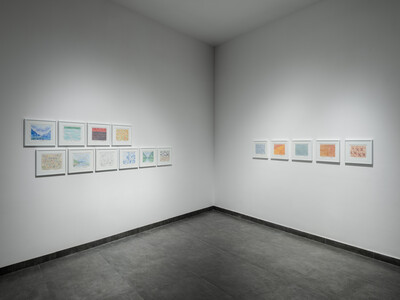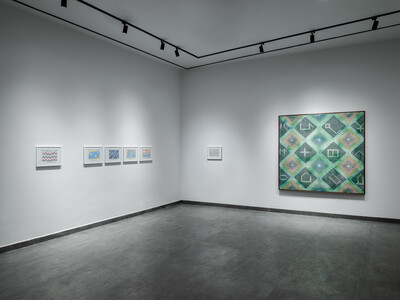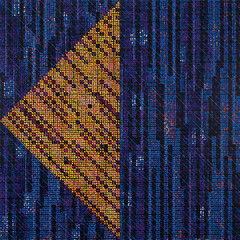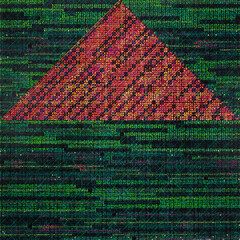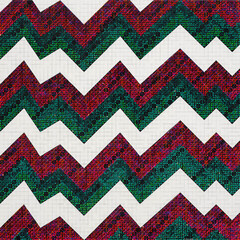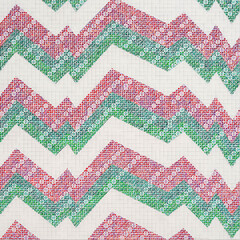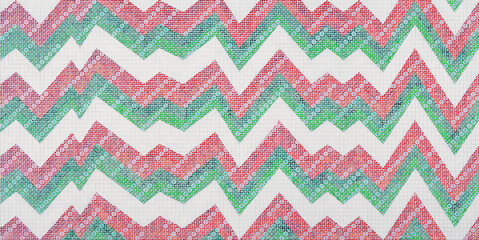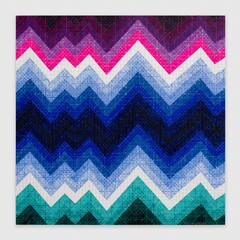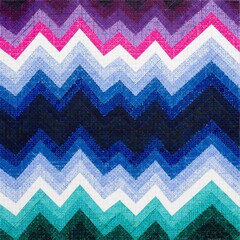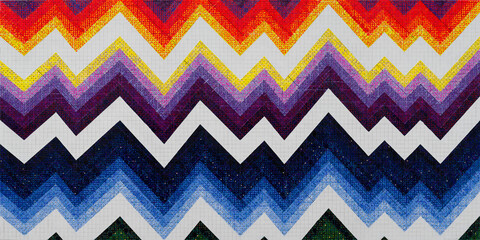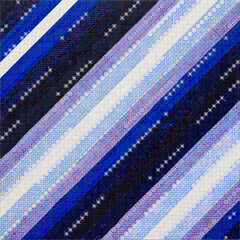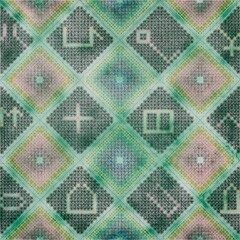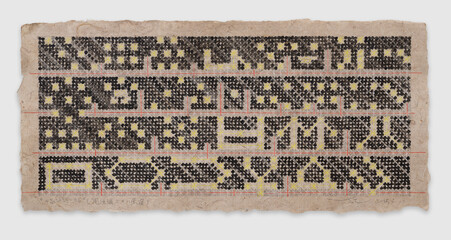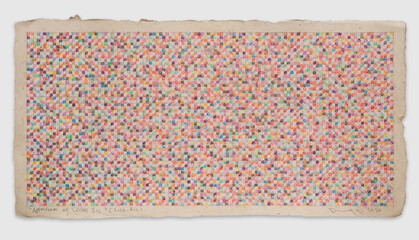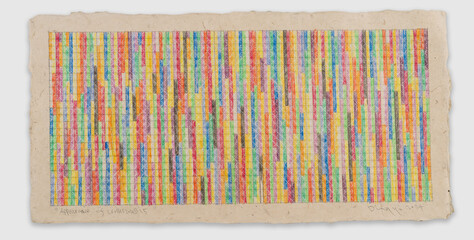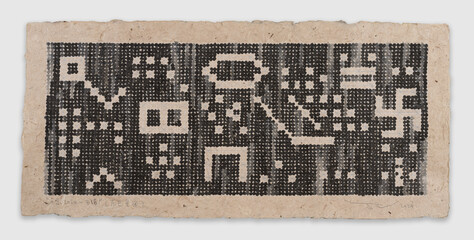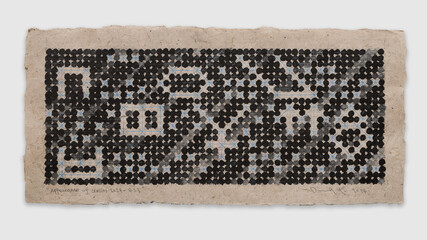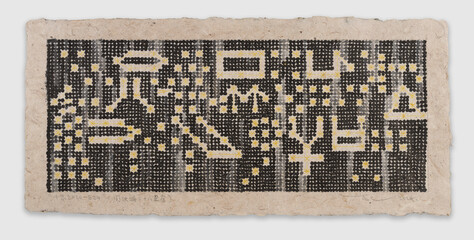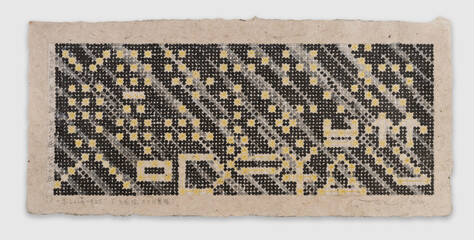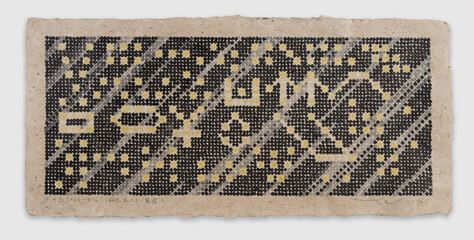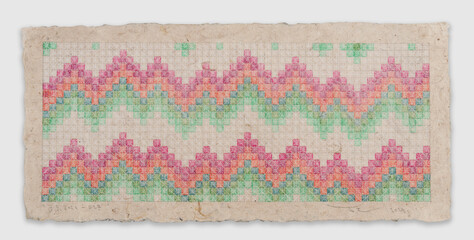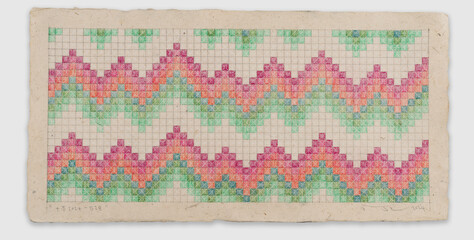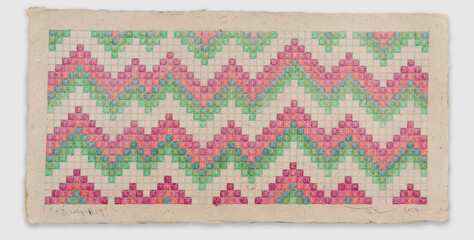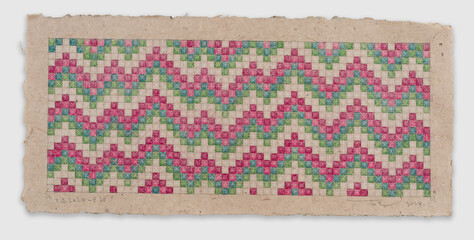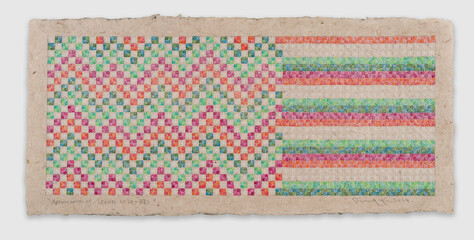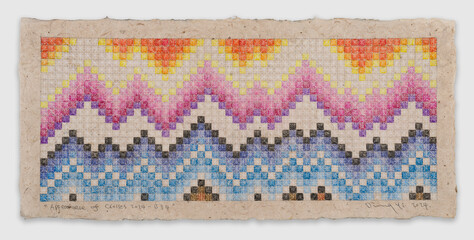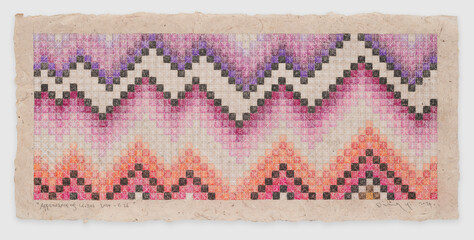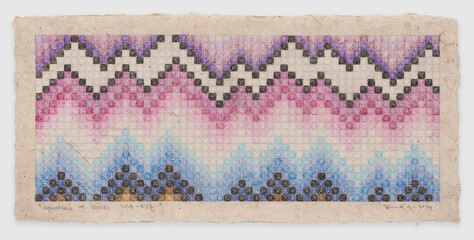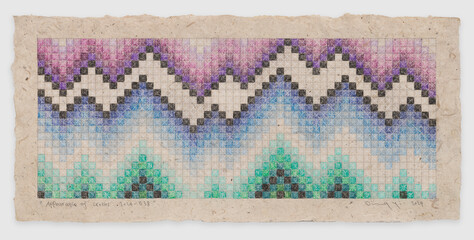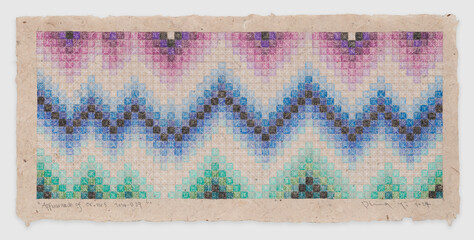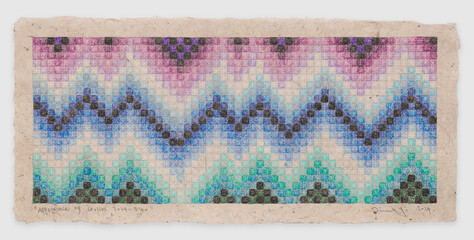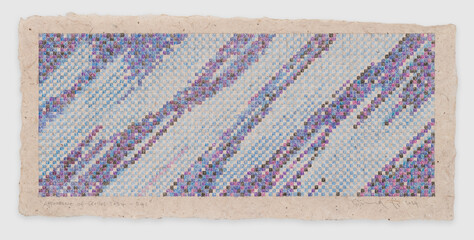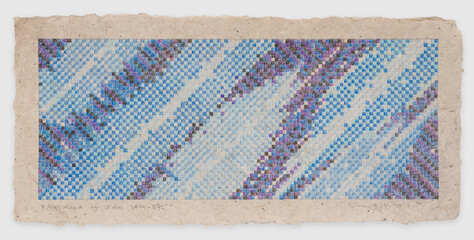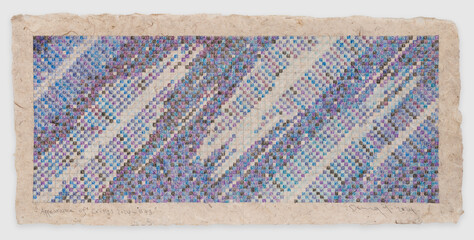Solo Exhibition Contemporary Gallery Kunming; The Yunnan University Wu Mayao Museum of Anthropology, Kunming
Curated by Cui Cancan
2025.7.26-2025.11.9
Co-organized by Contemporary Gallery Kunming and Anthropology Museum of Yunnan University
Contemporary Gallery Kunming and Anthropology Museum of Yunnan University will jointly host Artist Ding Yi's latest large-scale solo exhibition, ‘The Winding Path’. Curated by Cui Cancan, the exhibition will open on July 26th, 2025.
In 2024, Ding Yi traveled three times to the ancient Naxi region of Yunnan. He was deeply drawn to the animism and nature worship of this ancient civilization, its notion of life returning to ancestral lands, the mysterious Twenty-Eight Mansions, and the grand pictorial scroll The Road to Heaven, which describes the soul’s journey. Ding Yi decided to make Naxi and Dongba culture the central direction of this exhibition.
The exhibition is divided into six sections and held across two art institutions. At Contemporary Gallery Kunming, new works by Ding Yi are shown, inspired by The Road to Heaven, the Twenty-Eight Mansions, the traditional Dongba paper, and the Hengduan Mountains. The section “The Recurring Journey” offers a retrospective glimpse into Ding Yi’s work from 1987 to the present, hoping to present the 38-year-long winding road of the ‘cross’ symbol. At the Anthropology Museum of Yunnan University, artifacts from the Naxi people are exhibited alongside Ding Yi’s travel sketches from his three visits to the Naxi region, as well as a documentary filmed by a Tibetan director, portraying the Naxi people's journey back to their homeland.
These two venues offer two distinct contexts: one contemporary, one historical/anthropological/archaeological. They also present two different positions: a shift from ‘them’ to ‘us’; from a gaze that looks down on the Naxi, to one that looks up in reverence. These transformations point to the heart of the exhibition: how to find a third path between East and West—not merely the tail end of Western modernism and abstract art, nor a simple historical reflection of a particular region.
The Winding Path is Ding Yi’s path back to the origins of abstract spirit; it is also his search for inspiration—toward the highlands, the peaks, the ancient, and the natural. Just like the Naxi people, thousands of years ago, who followed the guidance of the North Star from the distant north, arriving here and formulating their own calendar and script along the way.
‘Journeying’ and ‘Winding Upward’ have become Ding Yi’s most important working methods in recent years, and they mark a significant turning point in the evolution of his “cross” symbol. Unlike site-specific art that often assumes a top-down stance, the ‘winding path’ is a path that seeks revelation, tempers the soul, and reconstructs the subject. It is in this sense that we can understand what Ding Yi means by ‘looking up’.
In certain respects, the spiritual aspiration behind Ding Yi’s The Winding Path points toward the premodern. In 1987, Ding Yi began his work with the ‘cross’ motif, originating from modernism. In the 1990s, he entered a conceptualist phase, formulating the principle that the ‘cross’ would be his sole content and form. Yet, he resisted sacrificing the sensuous world, seeking instead to preserve the textures of history and reality.
After 2000, shaped by the urbanization of Shanghai, Ding Yi returned to the symbolic resonance of the ‘cross’ within reality. By 2021, through journeys to Lhasa, Qingdao, Shenzhen, Ningbo, and Kunming, he once again reconnected with the energy of the classical and the mythic. But The Winding Path has no terminus—it sways fiercely between the poles of locality and globalization. Ding Yi searches for the primal wisdom of religious philosophy and the Eastern path. Everything returns in cycles: each transformation of the ‘cross’ is a reincarnation in the life of the ‘cross’ itself.
The Road to Heaven, this ancient mythic painting, becomes the vessel that ferries the ‘cross’ from modernism into conceptualism, then into the premodern. It climbs, layer by layer, over nine black mountains, from the human world to the divine realm. Or rather, through Ding Yi’s winding ascent, these ‘crosses’ have reestablished a connection with the living world: with human history, human origins, human loss, and the relationship between humans and ancient land, tradition, and nature. Ding Yi is fully aware that the only way we can get close to the truth and the universe's beginnings is by addressing the need for harmony between humanity and nature.
And yet, these ancient civilizations today resemble a faint glimmer of fireflies in the night. With sensitivity, devotion, and reverence, Ding Yi uses the faint glow glimmer of the ‘cross’ to illuminate the winding path.
About the Artist
DING YI, born in Shanghai in 1962, works and lives in Shanghai, one of the representative figures of contemporary abstract art in China, he works primarily with “+” and its variant “x” as formal visual signals.
Ding Yi has exhibited extensively at various institutions and galleries, among many others, The British Museum (London); M+ Museum (Hong Kong); Power Station of Art (Shanghai); The Museum of Modern Art(San Francisco); Solomon R. Guggenheim Museum (New York/Bilbao); Daimler Contemporary (Berlin); Centre Pompidou (Paris).
His works have also been included in Yokohama 2001 International Triennale of Contemporary Art (2001), The First Asia-Pacific Triennial of Contemporary Art (1993), 45th Venice Biennale (1993).
He has recent solo exhibitions at Mostyn Contemporary Arts (Llandudno, Welsh, 2025), Château La Coste(Strasbourg, Provence, 2024), Ningbo Art Museum & Ningbo Art Museum (Ningbo, 2023), Shenzhen Museum of Contemporary Art and Urban Planning(Shenzhen, 2023), Mojie Art Museum(Taiyuan, 2023), TAG Art Museum(Qingdao, 2022), Jebum-gang Art Center (Lhasa, 2022), Galería RGR (Mexico City, 2022), ShanghART Gallery (Shanghai, 2018/ Singapore 2022), Timothy Taylor Gallery (New York, 2021/ London, 2019), Long Museum (Chongqing, 2020/ West Bund, Shanghai, 2015), Galerie Karsten Greve (Cologne, 2020/Paris&St.Moritz, 2021), Guangdong Museum of Art (Guangzhou, 2018), Xi’an Art Museum (Xi’an, 2017), Hubei Museum of Art (Wuhan, 2016).
About the Curator
Cui Cancan, Curator and Writer.
Since 2012, Cui Cancan has curated over 180 major exhibitions and events. Representative group exhibitions include Nomads in the South: Rivers, Tunnels, Dampness and Constellations (Pingshan Art Museum, Beijing, 2023), Disconnected Generation: Electronic-colors, Internet-ization, Fashion Consumption, Science-Fiction Prose, and the GlobalIdentity of the Post-90s Generation (Song Art Museum, Beijing, 2022), the Hometown Spring Series of Urban Projects (2022-2024), The Methodology of the New Generation (The Wind H Art Center, Beijing, 2021), Nine-Tiered Pagoda: Spatial and Visual Magic (Pingshan Art Museum, Beijing, 2020), The Curation Workshop (OCT Art & Design Museum, Shenzhen, 2019/2020), the Chinese New Year Special Project Series (2015-2019), The Decameron (Caochangdi, Beijing, 2016), Between the 5th and 6th Ring Road in Beijing (Owspace, Beijing, 2015), Unlived by What is Seen (Galleria Continua, Pace Beijing, and Tang Contemporary Art Center, Beijing, 2014), Country Style Haircut (Yuan Art Museum, Beijing, 2013), Heiqiao Night Away (Heiqiao Village, Beijing, 2013), Chengdu Biennale, Southeast Asia Art Triennial, Changjiang International Photography and Video Biennale, and nearly 100 solo exhibitions and retrospectives for individual artists.
Awards and honors include the Chinese Contemporary Art News Best Curator in Asia (2023), The Wallpaper Best Exhibition Experience Award (2022), the Best Exhibition Award at Beijing Gallery Weekend (2018), The Art Newspaper Asia Art Contribution Award – Lincoln Curator Nomination (2015), the AAC Art China Annual Curator Nomination (2013), the YISHU Award for Contemporary Chinese Art Criticism (2013), and CCAA Special Award for Contemporary Art Criticism (2013).
Contemporary Gallery Kunming (CGK)
Contemporary Gallery Kunming is a private non-profit art institution sponsored by Kunming Top River Group. Since its inception in 2018, CGK has staged numerous important group exhibitions, including Notes on Region, Espace et Temps: Sino-French Architecture Exhibition, “Constellation: Yunnan Oil Painting Since 1978,” “Constellation: Yunnan Printmaking Since 1978,” Fields of Being——Traditions of Yunnan Architecture, The Language of Mushrooms:The Interspecies Internet, After Landscape, Hometown Spring, 1988: Liu Wei, Zeng Hoa, and Ren Xiaolin, and solo exhibitions of such artists as Zeng Xiaofeng, Tang Zhigang, Marc Riboud, Zhang Chunyang, Zeng Xiaolian, Ma Yun, Yu Jian, He Duoling, Shui Yanfei, Du Tianrong, Yang Liping, Liu Jianhua, Li Ji, Yao Zhonghua, Wu Jialin, Luo Xu, Zhang Xiaogang, Xiao Quan, Claude Viallat, Li Binyuan and Zhu Zude. Contemporary Gallery Kunming is rooted in the history and culture of Yunnan Province, strives to build connections with Southeast Asia, and aims to serve both the local art industry and the public through objective research of Yunnan’s contemporary art history and comprehensive presentation of the latest trends and creative output in contemporary art.
Anthropology Museum of Yunnan University
Anthropology Museum of Yunnan University was established in September 2003 through the generous donation of Mr. T. K. Woo, a renowned entrepreneur from Hong Kong, and his wife, Mrs. Woo Ma Yiu, with additional support from Yunnan University. It officially opened to the public on April 10, 2006. Affiliated with the School of Ethnology and Sociology at Yunnan University, the museum holds a collection of over 3,000 artifacts, including ethnic garments, traditional musical instruments, religious objects, tools, household items, and historical manuscripts. Its permanent exhibitions include A Century of Ethnology at Yunnan University and The Culture of the Ancient Tea Horse Road. The museum also regularly presents thematic temporary exhibitions, interdisciplinary academic lectures and workshops, and serves as a teaching site for disciplines such as anthropology, art studies, and museology.
More Pictures:
丁乙:盘山之路(节选)|艺术当代
以“十示” 探索三十八年:丁乙再向新一程 “盘山之路”|艺术新闻中文版
丁乙最新个展:3次云南盘山之旅,一场精神的内视|一条艺术

